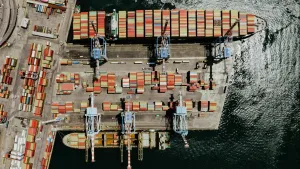
Aviation sector struggles to lower emissions, report shows
While deceptively small, GHG emissions from the aviation sector pose an increasing threat to the environment.
The aviation sector continues to report an increasing share of the greenhouse gas (GHG) emissions while other industries are lowering their carbon footprint, signalling the need for an industry-wide approach according to the Kearney Energy Transition Institute.
Despite making up only 2.1% of the transportation industry’s global carbon emissions in 2019, among the lowest sectors overall, a recent report by Kearney noted that airplane emissions make a distinct atmospheric impact compared to other modes of transportation due to the altitude at which these emissions are released.
“Aviation is one of the fastest growing sectors, with 4.3% growth estimated annually through 2040,” it said. “This boom in air travel, while it provides many economic benefits, has produced an annual increase in emissions that has not been countered with sufficient emission reduction measures.”
Based on this projection, the International Civil Aviation Organization projected the sector would see a 3 to 4 percent yearly growth in CO2 emissions.
“For aviation to reach net zero by 2050, it needs to continue to invest in R&D (research and development) for sustainable technology, foster collaboration across the sector on the production of alternative fuels, and increase public/private partnerships to fund accelerated decarbonization strategies,” Kearney said.
It stressed the need for short-term and long-term actions to reach the sector's goals towards net-zero.
Although the aviation industry has been exploring alternative fuel sources to cut its carbon footprint, challenges remain.
For instance, the use of sustainable aviation fuel (SAF) requires more investments, resources and time to produce than standard jet fuel, while going full electric is only expected to be applicable for short flights with light loads beyond 2030.
The first commercial hydrogen-powered plane will likely not take off until 2035 due to technological and production limitations.















